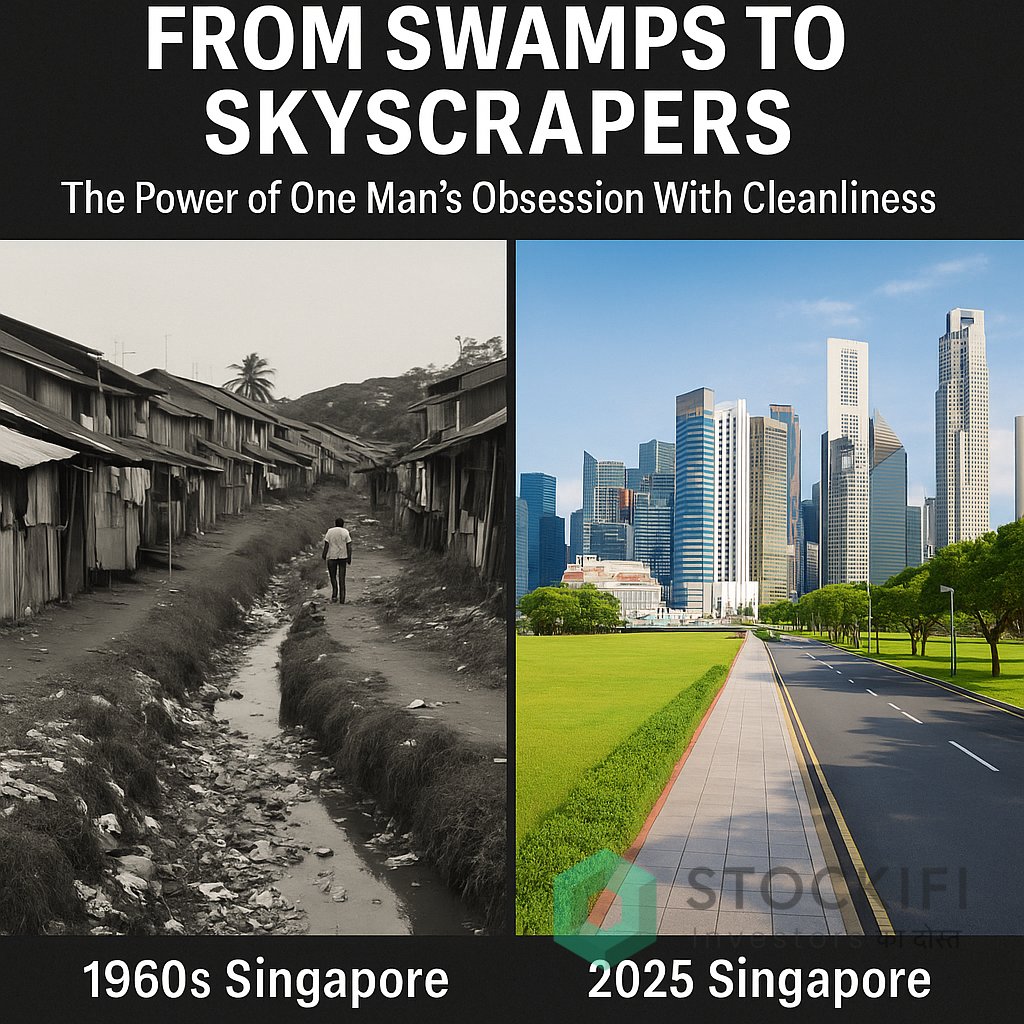India just got upgraded by Goldman Sachs.
In 2024, Goldman said: “India is too expensive.”
They slashed their rating from “Overweight” to “Neutral.”
Foreign investors pulled out over $30 billion.
Midcaps bled.
Your smallcap SIPs saw red.
Now in late 2025, they’re saying: “India is back. We see upside from here.”
Their Nifty target? 29,000 by 2026 — that's a ~14% jump from today.
So what changed?
Here’s the decoded truth:
Bookmark and retweet this thread to revisit it later
In 2024, Goldman said: “India is too expensive.”
They slashed their rating from “Overweight” to “Neutral.”
Foreign investors pulled out over $30 billion.
Midcaps bled.
Your smallcap SIPs saw red.
Now in late 2025, they’re saying: “India is back. We see upside from here.”
Their Nifty target? 29,000 by 2026 — that's a ~14% jump from today.
So what changed?
Here’s the decoded truth:
Bookmark and retweet this thread to revisit it later

Goldman now sees FOUR pillars holding up India’s bull case.
Translation: They finally believe the Indian rally isn’t just sentiment — it’s structural.
And why it could spark a serious midcap revival.
1. Growth-supportive policies are back on the menu
The government’s hinting at:
Slower fiscal tightening
Liquidity boost from RBI
More room for infrastructure push
Even tweaks to GST collections
This isn't just budget jargon.
It’s code for:
“Growth will get political oxygen again.”
For midcaps in infra, consumption, and defence — this is green signal time.
Translation: They finally believe the Indian rally isn’t just sentiment — it’s structural.
And why it could spark a serious midcap revival.
1. Growth-supportive policies are back on the menu
The government’s hinting at:
Slower fiscal tightening
Liquidity boost from RBI
More room for infrastructure push
Even tweaks to GST collections
This isn't just budget jargon.
It’s code for:
“Growth will get political oxygen again.”
For midcaps in infra, consumption, and defence — this is green signal time.
2. Earnings revival is no longer a rumour
Goldman expects India Inc’s earnings to jump from 10% (FY25) to 14% (FY26).
That’s not just large-cap recovery.
Historically, when earnings rebound → midcaps outperform because they’re more earnings-sensitive.
This could be the start of a powerful re-rating cycle.
Goldman expects India Inc’s earnings to jump from 10% (FY25) to 14% (FY26).
That’s not just large-cap recovery.
Historically, when earnings rebound → midcaps outperform because they’re more earnings-sensitive.
This could be the start of a powerful re-rating cycle.
3. Foreign investors are under-positioned
Fact: India has underperformed other EMs since 2022.
GS says: global funds are underweight. Flows are weak.
But that’s exactly the setup for a comeback.
When FIIs rotate back in → guess where the flows go?
High-beta. Domestic-facing. Midcap-heavy.
Your portfolio might just get a tailwind you didn’t expect.
Fact: India has underperformed other EMs since 2022.
GS says: global funds are underweight. Flows are weak.
But that’s exactly the setup for a comeback.
When FIIs rotate back in → guess where the flows go?
High-beta. Domestic-facing. Midcap-heavy.
Your portfolio might just get a tailwind you didn’t expect.
4. Valuations are high, but not dangerous
India still trades at a premium — around 23× P/E — but the gap vs other markets is narrowing.
This makes it harder for global analysts to keep saying “India is too expensive.”
GS says: valuations are now “defensible.”
Translation:
“Even if you’re paying a premium, the earnings justify it.”
Less fear. More flow. Clearer conviction.
India still trades at a premium — around 23× P/E — but the gap vs other markets is narrowing.
This makes it harder for global analysts to keep saying “India is too expensive.”
GS says: valuations are now “defensible.”
Translation:
“Even if you’re paying a premium, the earnings justify it.”
Less fear. More flow. Clearer conviction.
So what does this mean for YOU — the Indian retail investor?
You’re not Goldman.
You don’t move billions.
But you do ride sentiment shifts.
And this upgrade is one of the clearest signals of a changing tide.
Here’s why:
A sentiment shift like this doesn’t just help Nifty. It revives Midcaps.
Midcap stocks are tightly linked to domestic narratives:
Infrastructure
Manufacturing
Consumption
Railways, defence, logistics
Goldman’s themes align with all these.
That means your forgotten midcap picks might just come alive again.
You’re not Goldman.
You don’t move billions.
But you do ride sentiment shifts.
And this upgrade is one of the clearest signals of a changing tide.
Here’s why:
A sentiment shift like this doesn’t just help Nifty. It revives Midcaps.
Midcap stocks are tightly linked to domestic narratives:
Infrastructure
Manufacturing
Consumption
Railways, defence, logistics
Goldman’s themes align with all these.
That means your forgotten midcap picks might just come alive again.
BUT — this isn’t a guaranteed 40% rally.
Even Goldman is calling for ~14% upside by 2026.
There are still risks:
Global interest rates
AI-related dislocation
Geopolitical shocks
Indian policy stumbles
Valuation fatigue
Even Goldman is calling for ~14% upside by 2026.
There are still risks:
Global interest rates
AI-related dislocation
Geopolitical shocks
Indian policy stumbles
Valuation fatigue
In summary:
India just got re-invited to the big boys’ table.
Global funds are sniffing opportunity.
And the domestic policy + earnings + valuation puzzle seems to be aligning.
If you’re holding quality midcaps with patience, this might be your signal to rebuild conviction
→ Join Stockifi Community to find out our latest potential multibagger idea
👉 Join Now t.me/stockifi
India just got re-invited to the big boys’ table.
Global funds are sniffing opportunity.
And the domestic policy + earnings + valuation puzzle seems to be aligning.
If you’re holding quality midcaps with patience, this might be your signal to rebuild conviction
→ Join Stockifi Community to find out our latest potential multibagger idea
👉 Join Now t.me/stockifi
• • •
Missing some Tweet in this thread? You can try to
force a refresh










